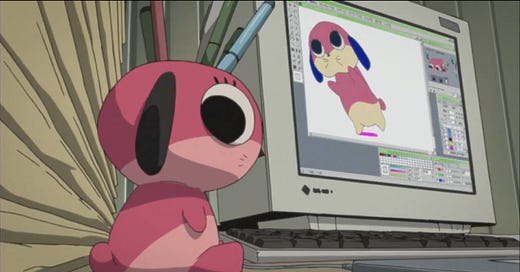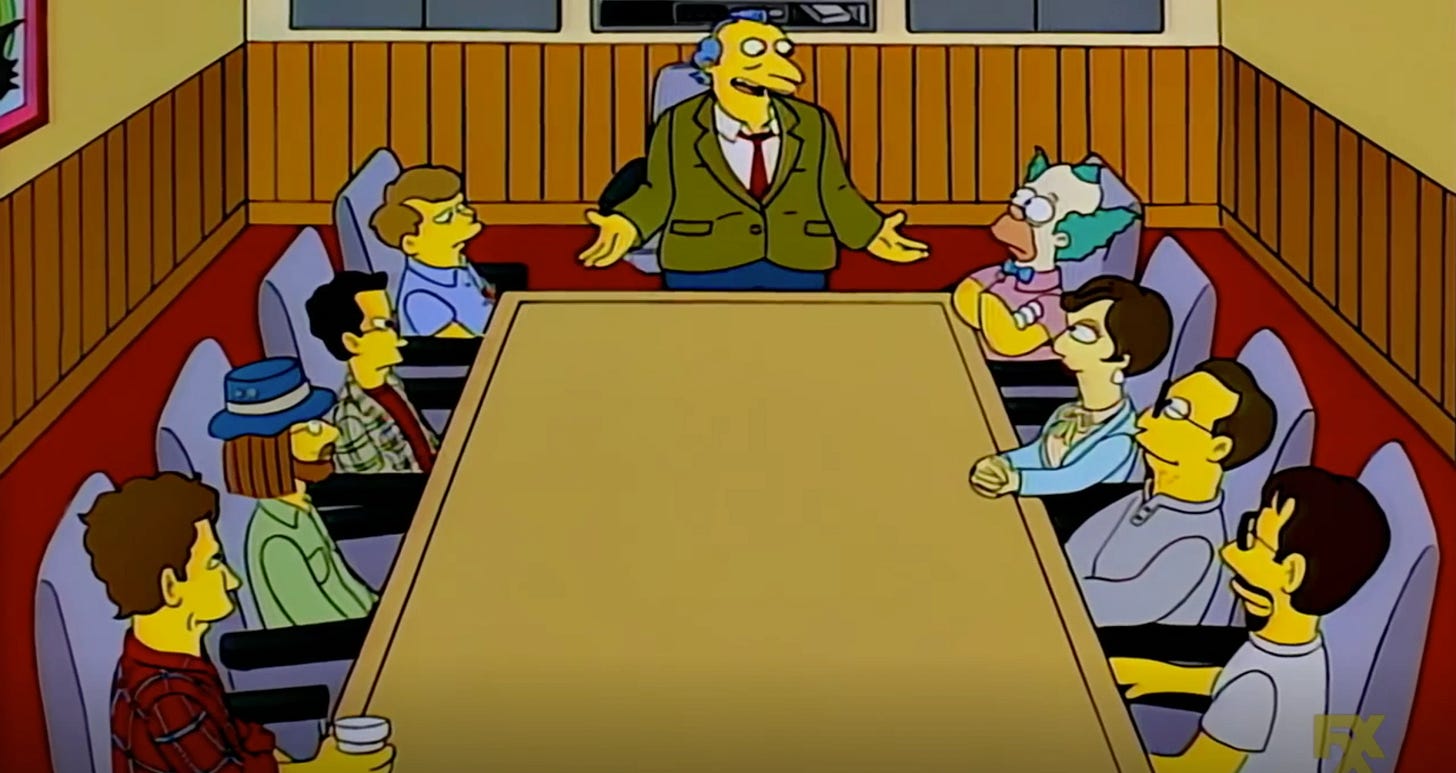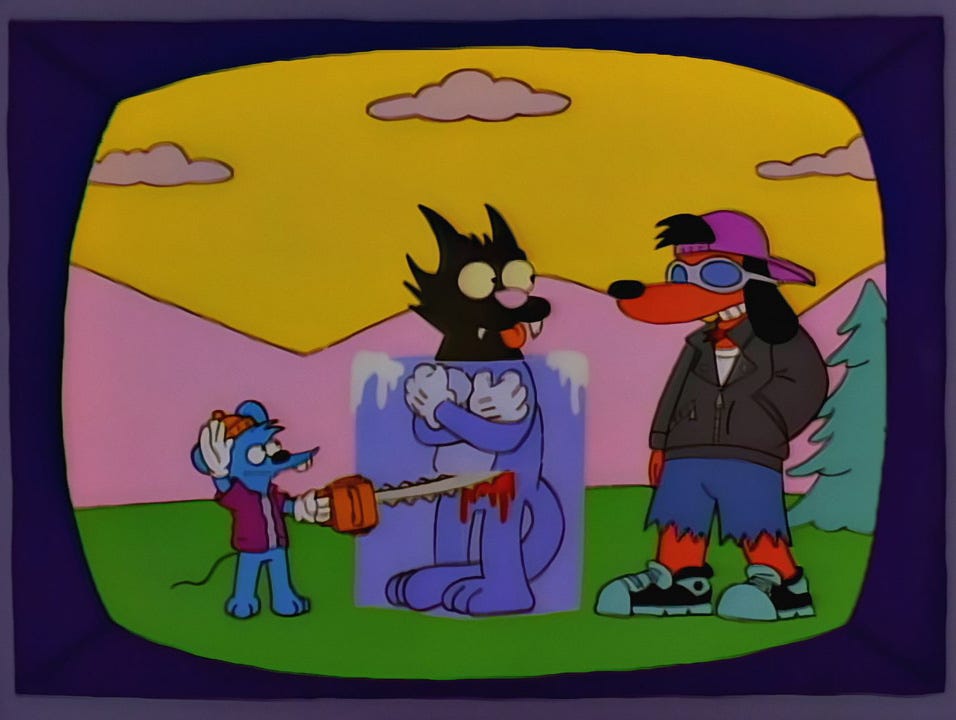Pencils, Poochie, Paranoia: When Animation Talks About Itself
A very cursory look at how animation creation is portrayed in animated works.
After I used my last post to ponder what animation actually is, I received a spread of fascinating replies from readers in the comments section, on social media and elsewhere. The team at Cartoon Brew expanded thoughtfully on the article during a livestream. All of this affirmed my sense that the debate, more than the definition, is what matters.
Now for a complementary article. Below, I won’t return to the question of what qualifies as animation. Instead, by looking at a few things that are unquestionably animated, I want to consider how the practice of animation can be framed and presented to the outside world. In fact, I’m going to focus on how it has been depicted within works of animation, in order to glean insights into how people involved in animation view what it is they do.
What follows is far from a comprehensive overview of animation about animation. I’m only looking at one short and two TV episodes (all of which I love), so as to get a few ideas moving. According to these three works, what is animation?
First, animation is creativity. It is a working of the imagination, a tapping into intuition, an expression of the creator’s knowledge and sensibility; like all creative processes, it involves struggle. This is the subject of Kathy Rose’s hand-drawn short Pencil Booklings (1978), in which the artist herself appears via rotoscoping (animation based closely on live-action footage). We see her sat at her desk, conjuring fantastical creatures out of thin air with her pencil. The creatures are quick to assert their autonomy—“Let’s make our own film, just like Kathy,” declares her pencil when she briefly leaves her desk—and Rose spends the film alternately struggling to control them and indulging their whims. These creatures are both a part of her and independent. Playfully, she is stating her ambivalence about her creativity.1
The functioning of creativity is just as mysterious in animation as in any other art. This makes it an interesting subject for thoughtful people to discuss. I love hearing the Brothers Quay, for example, compare their creative process to that behind music: “Our films have always obeyed musical laws rather than dramaturgical laws. Ultimately the deep symbiosis you search for is that of images ‘heard’ and a music ‘seen.’”2 Such reflections often reveal as much about the artist as their films do.
But while reckoning with this mystery, the artist may also acknowledge another ingredient in what they do: effort. In Pencil Booklings, Rose sometimes leaves in the frame numbering to remind us of the sheer amount of drawings needed (7,047 by the end!). The academic Nicholas Sammond has shown that early animation entrepreneurs were already torn between presenting their works as the result of labour and as a form of magic. Bud Fisher, creator of Mutt and Jeff, would cite the thousands of drawings needed to make one of his shorts, but then joke that the cartoons were made by the characters themselves: “All I have to do is give them some scenery and they supply the action.” When artists or producers speak exclusively about the magic or play of animation, as they often do, they stray close to mystification.3 After all, great animation also requires great work, sometimes by a dedicated individual like Rose, but more often by a whole industrial crew.
So, yes, animation is also labour. Creativity aside, it is generally made through the practised, coordinated skills of specialists often working under pressure. It tends to be very time-consuming. Few understand this like poor Saruta, the hapless protagonist of episode ten of Paranoia Agent (2004). By this point in Satoshi Kon’s harrowing psycho-thriller, we’ve seen a shadowy serial assailant wreak havoc on a frazzled Tokyo, haunting and attacking its most vulnerable citizens. Episode ten, titled “Mellow Maromi”, may be the most horrific of them all, and it is telling that Kon sets it inside an animation studio.
Saruta is a production coordinator—the office dogsbody whose role it is to support the crew logistically and keep them on schedule. Unfortunately, he’s rubbish at his job, and is relentlessly bullied by his exhausted colleagues as he causes one delay after another in the rush to deliver a show to the network. As the stress mounts, the spectral assailant catches up with him too, leaving him dead on the roadside.
“Mellow Maromi” is a vicious satire of the industry and its working conditions (spoiler alert: Saruta isn’t the only one who ends up dead). But it also serves as Kon’s tribute to the below-the-line workers that make his films and series possible. By centring on a production coordinator—the nexus of the production—“Mellow Maromi” is able to introduce the various people who make up an animation team, each of whose roles is briefly explained in onscreen text, and each of whom suffers under their own acute pressures. Colour designers and sound directors are rarely placed in the spotlight. Here, they are, even if the light is tinted blood-red.
I have worked on production teams in two studios and am glad to say that my experiences were nothing like Saruta’s—they were in fact great places to work. I was fortunate to be in France and the UK: there, animation crews tend to enjoy somewhat better working conditions than their peers in Japan, who are desperately underpaid and overworked. But animation can be a precarious career anywhere (unions have provided only intermittent defence in some countries). The industry’s allure—its promise of fulfilling creative work—means exploitation is rife.
As Saruta lies brained on the ground, network executives rush over and grab the tape containing the all-important show from his lifeless hand. “Is it ok?” asks one. “Yes it is!” replies the other, relieved, and insensible to the corpse before her. The execs hardly appear in the episode, whose focus is on the production pipeline, but we’re left in no doubt that the pressures bearing down on Saruta and his colleagues ultimately issue from them.
The context to labour conditions, then, is often this: animation is a business. Kon’s vision is exceptionally dark, but he’s hardly the only one to have satirised the commercial forces that condition animation production. Think of The Simpsons (1989-), which regularly uses its fictional The Itchy & Scratchy Show to talk about itself. An ultra-violent Tom and Jerry parody, the series holds Springfield’s children in thrall—yet even it suffers ratings slumps.
The Simpsons episode “The Itchy & Scratchy & Poochie Show” (1997) is probably its most direct—and certainly its funniest—confrontation with the commercial aspect of animation production. Itchy & Scratchy’s viewership is down. Having held a focus group, the network decides that a new character, a “dog with attitude,” is what’s needed to revive the show’s fortunes. One exec describes her vision of the character to the writers: “He’s edgy. He’s in your face. You’ve heard the expression ‘Let’s get busy.’ Well, this is a dog who gets biz-zay.” Enter Poochie.
Writers’ room and voice-recording sessions aside, the episode doesn’t look at production per se, bar a brilliant scene in which an artist is tasked with designing Poochie as the execs sling conflicting buzzwords at him: “hip-hop,” “surfer,” “rasta.” The targets of its scorn are the all-powerful buyers and executives who decide what gets made in the first place. The inanity of the market-obsessed approach to creating animated works—or “content,” as it would be called today—is lampooned in the episode: Poochie is reviled by viewers from day one, and killed off just as quickly as he was conceived. (The exec’s explanation: “I’d attribute the product failure to fundamental shifts in our key demographic, coupled with the overall crumminess of Poochie.”)
The Simpsons itself, currently in its 35th season, is now the show that needs saving. But as it has trudged down its own ratings decline through the years, the very nature of ratings has evolved as streaming platforms have supplanted linear broadcasters. The streamers have access to once-unimagined quantities of data, which has turbocharged the obsession with viewership parodied in “The Itchy & Scratchy & Poochie Show.” At the same time, they keep almost all that data to themselves, so that the public is left guessing exactly how decisions are made. But the execs are as blunt as those behind Itchy & Scratchy if not more so, with Netflix in particular developing a reputation for brutally swift cancellations.
So animation is creativity, labour, a business. Of course, different animated works are these things to different extents, and animation is many other things too. None of this is a revelation, but I find it interesting to look at how the making of animation is portrayed by those who know it best.
In live-action cinema, there’s a lively tradition of films about filmmaking, ranging from the excellent Day for Night (1973) to the execrable Babylon (2022). My sense is that this is rarer in animation, possibly because rows of people sat at desks are less cinematic than a film set.4 The anime series Shirobako (2014-15), which is about an animation team, sits atop my to-watch list. If you have any other examples of animation about animation, I’d love to hear about them in a comment below.
Rose is a fascinating multidisciplinary artist who has often combined animation with onstage dance. It makes sense that someone interested in melding live performance with animation would rotoscope herself into one of her films. For more on Rose, you can start with John Canemaker’s excellent 1995 profile for Print magazine.
The Quays told me this during an interview that would ultimately be published, in a French translation, in the inaugural issue of Blink Blank magazine.
Quoted in Sammond’s Birth of an Industry, an enthralling book on multiple fronts.
I’ll acknowledge here the rich tradition, which stretches back to animation’s roots in vaudeville, of works that show an animator (either onstage or within the film) seeming to interact with a cartoon character: think of Winsor McCay’s Gertie the Dinosaur (1914) or Chuck Jones’s Duck Amuck (1953).








I have to recommend Masaaki Yuasa's great series "Keep Your Hands Off Eizouken!" Even though the characters are high-schoolers, I found it very honest and relatable to the work of making your first short film, from the early bursts of creativity and inspiration to the struggles and long hours of work.
I believe the need to separate animation into distinct creative, labor, and business components is the limitation of the word "production" that is generally used by the public. The Japanese anime industry, for example, makes a distinction between production planning (製作), which describes the business aspect of anime production, and creative production (制作), which encompasses creative and labor. Thank you for succinctly defining these components and for linking to my article on Animenomics.
Another work of animation about animation that comes to mind is a direct-to-video Japanese anime title from the 2000s called 'Animation Runner Kuromi' that, like 'Shirobako', highlights the work of production assistants as the connector among anime studio teams.
One that isn't animation is a Japanese drama series called 'Trillion Game' (available on Netflix), where in the eighth episode two television networks compete to win a distribution contract with a popular anime studio.